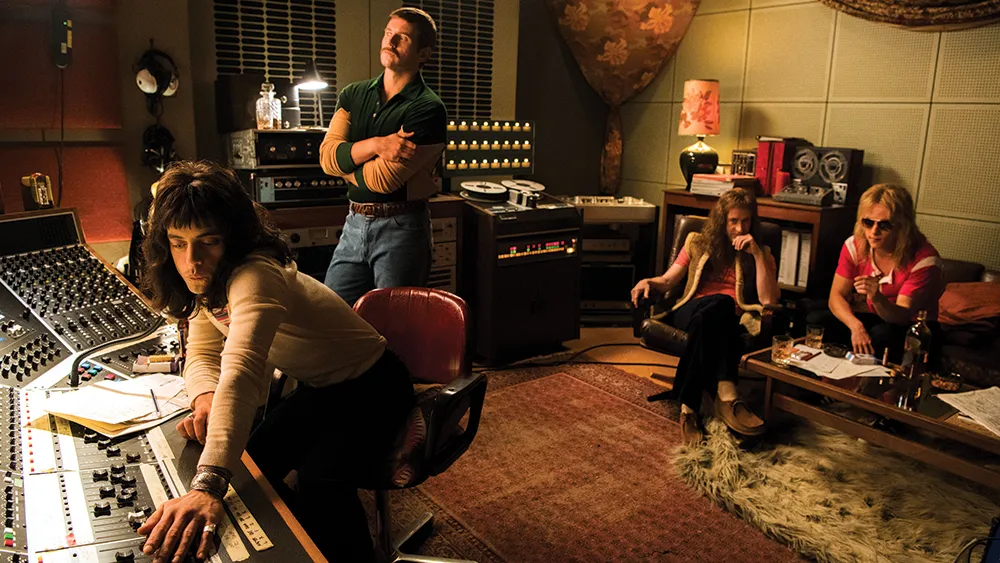Queen, the iconic British rock band, is renowned for its groundbreaking music, electrifying performances, and the distinctive voice of Freddie Mercury. While their stage presence and live shows are legendary, a significant part of their magic was conjured within the confines of recording studios. In this exploration, we delve into the behind-the-scenes world of Queen, uncovering fascinating stories from their time in the recording studio.
The Birth of Bohemian Rhapsody: A Studio Marvel
No discussion about Queen’s studio escapades can start without the groundbreaking “Bohemian Rhapsody.” Recorded over three weeks in various studios, this six-minute epic defied conventions and pushed the boundaries of what was possible in a rock song. Freddie Mercury’s vision, Brian May’s intricate guitar work, John Deacon’s solid bass, and Roger Taylor’s dynamic drumming all came together in a way that transcended the norms of the 1970s music scene.
The song’s operatic middle section, featuring multi-tracked harmonies, is now legendary. The band’s perfectionism and willingness to experiment led to a meticulous process of overdubbing, layering vocals upon vocals to achieve the desired operatic effect. The result was a masterpiece that not only topped the charts but also changed the landscape of rock music.
Freddie Mercury’s Vocal Mastery: Creating A Kind of Magic
Freddie Mercury, often hailed as one of the greatest vocalists in rock history, showcased his vocal prowess in every Queen recording. The studio became his playground, and his ability to harmonize with himself was a testament to his extraordinary talent. The vocal overdubs in tracks like “Somebody to Love” and “We Are the Champions” highlight Mercury’s perfectionism and dedication to achieving sonic excellence.
In the studio, Mercury’s flamboyant personality and precise vision drove the band to new heights. He had a unique ability to translate emotion into his vocal delivery, creating an intimate connection with the audience. Behind the scenes, Mercury’s meticulous attention to detail sometimes meant re-recording lines until he felt the emotional resonance was just right.
Brian May’s Guitar Magic: Crafting the Queen Sound
Brian May, the virtuoso guitarist of Queen, played a pivotal role in shaping the band’s distinctive sound. His homemade guitar, famously named the “Red Special,” produced a unique tone that became synonymous with Queen’s music. In the studio, May’s meticulous approach to crafting guitar solos and harmonies elevated the band’s songs to a level of sophistication rarely seen in rock music.
May’s guitar work on “Killer Queen” and “Brighton Rock” exemplifies his innovative style. He often experimented with guitar harmonies and intricate overdubs, creating a wall of sound that defined Queen’s signature sound. Behind the scenes, May’s dedication to his craft extended to constructing and modifying his own equipment, showcasing the DIY ethos that was integral to the band’s identity.
The Collaborative Genius: Queen as a Songwriting Collective
While Freddie Mercury and Brian May were the primary songwriters, Queen’s collaborative spirit was evident in the studio. Each member brought a unique musical perspective, and the democratic approach to songwriting resulted in a diverse catalog of hits. Tracks like “Radio Ga Ga” and “Under Pressure” showcased the band’s ability to seamlessly blend their individual talents into a cohesive musical force.
The studio sessions often involved spirited debates and creative discussions, with each member contributing their expertise. John Deacon’s basslines, Roger Taylor’s drumming, and the intricate vocal arrangements were all essential components of the Queen sound. The collaborative synergy within the studio walls was, in many ways, the secret ingredient that made Queen’s music timeless.
Innovations and Experimentation: Pushing Studio Boundaries
Queen’s studio journey was marked by a relentless pursuit of innovation. Their willingness to experiment with different genres, instruments, and production techniques set them apart. The synthesizer-driven “A Night at the Opera” and the electronic-infused “Hot Space” are testaments to their bold exploration of new sonic territories.
“Another One Bites the Dust” stands out as an example of Queen’s foray into funk and dance music. Co-written by John Deacon, the bassline-driven anthem became a massive success and showcased Queen’s ability to adapt to evolving musical landscapes. Such experimentation in the studio not only kept their sound fresh but also solidified their status as genre-defying pioneers.
Legacy of Studio Mastery: Queen’s Lasting Impact
Queen’s studio recordings continue to resonate with audiences worldwide, serving as a testament to the band’s unparalleled musicality and studio mastery. Their influence on subsequent generations of musicians is immeasurable, with artists from various genres citing Queen as a source of inspiration.
From the elaborate production of “A Night at the Opera” to the raw energy of “News of the World,” Queen’s studio journey reflects a commitment to artistic excellence. Behind the scenes, in the confines of recording studios, Queen forged a musical legacy that transcends time, reminding us that true greatness is often born in the creative crucible of the studio.

